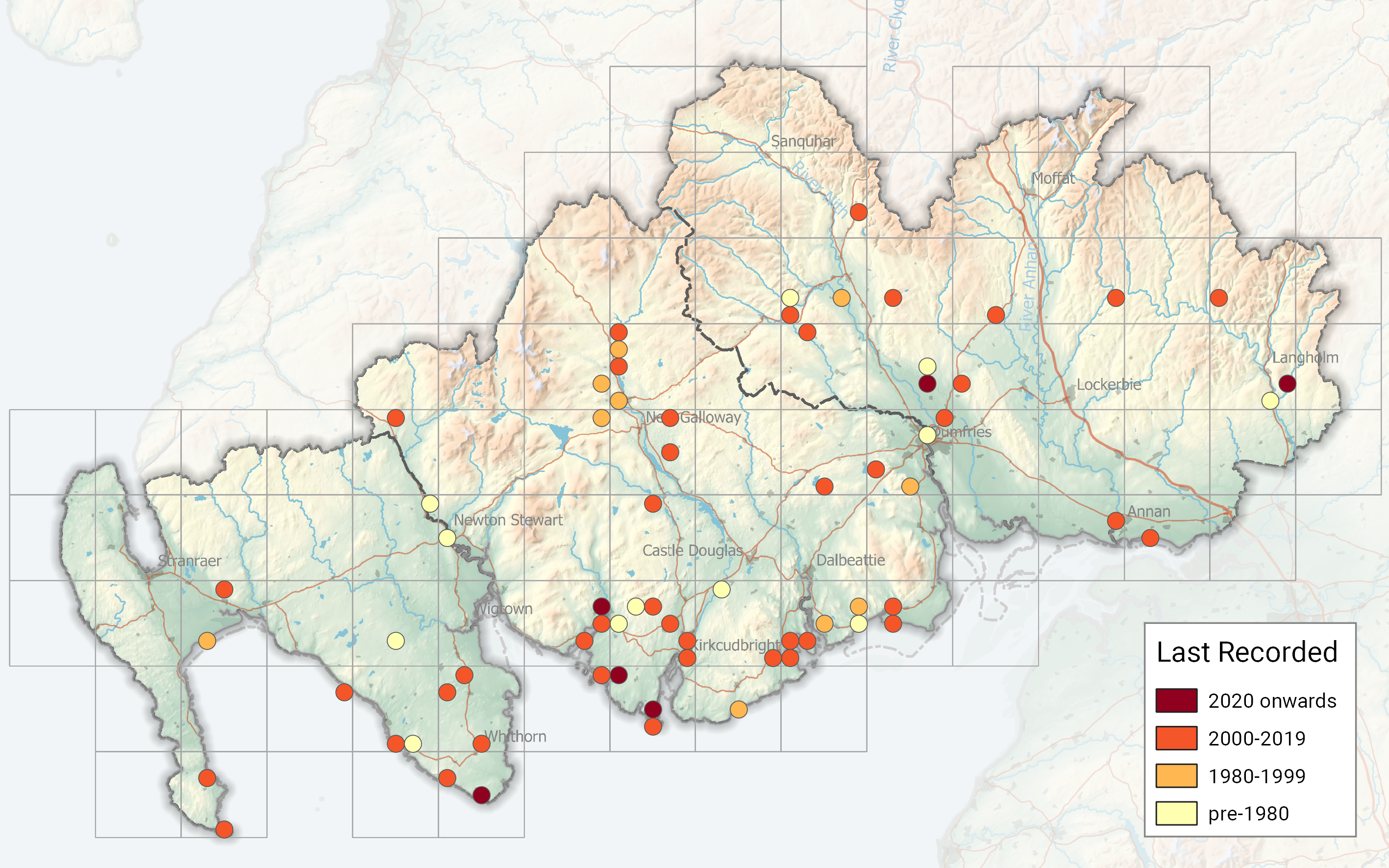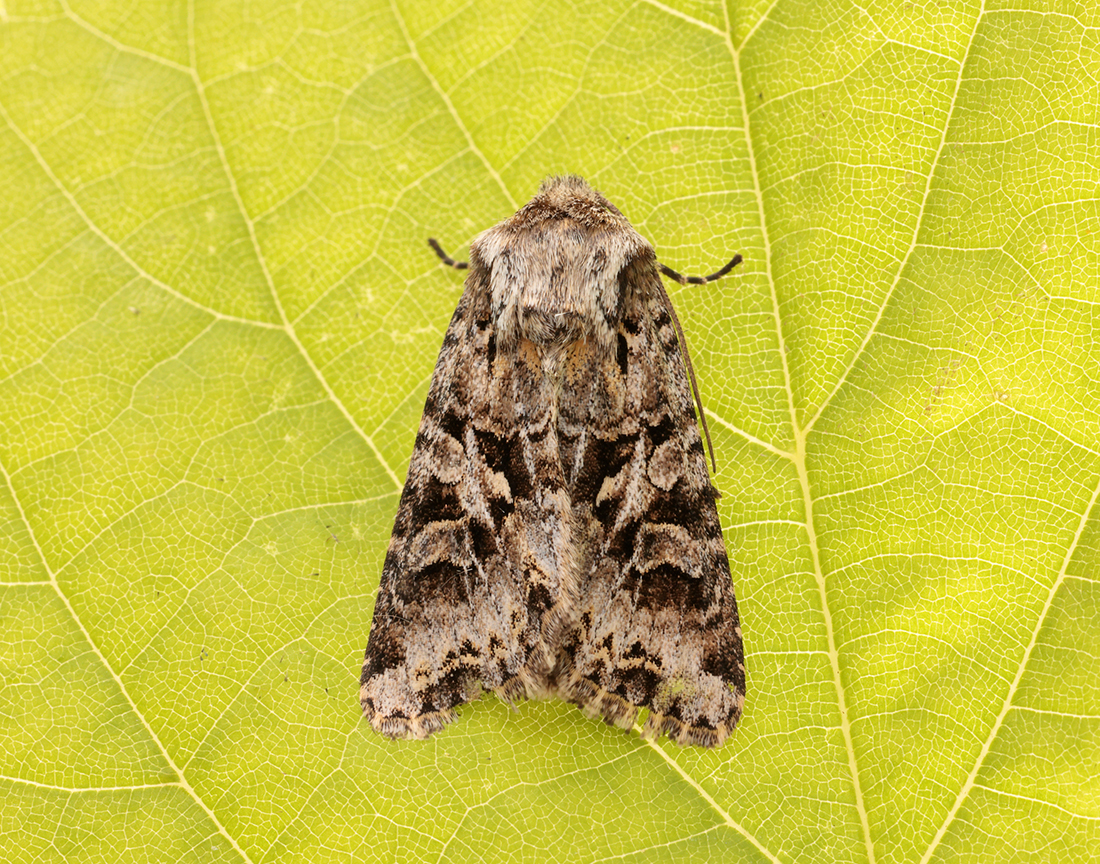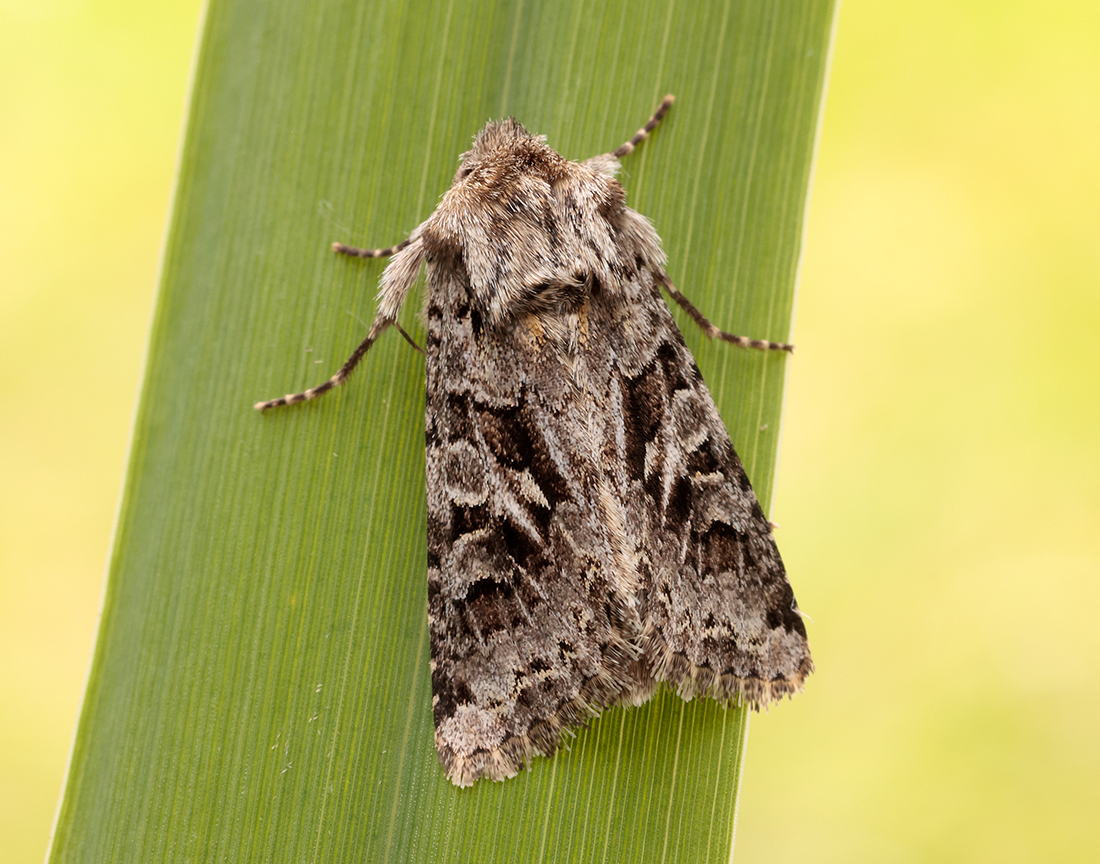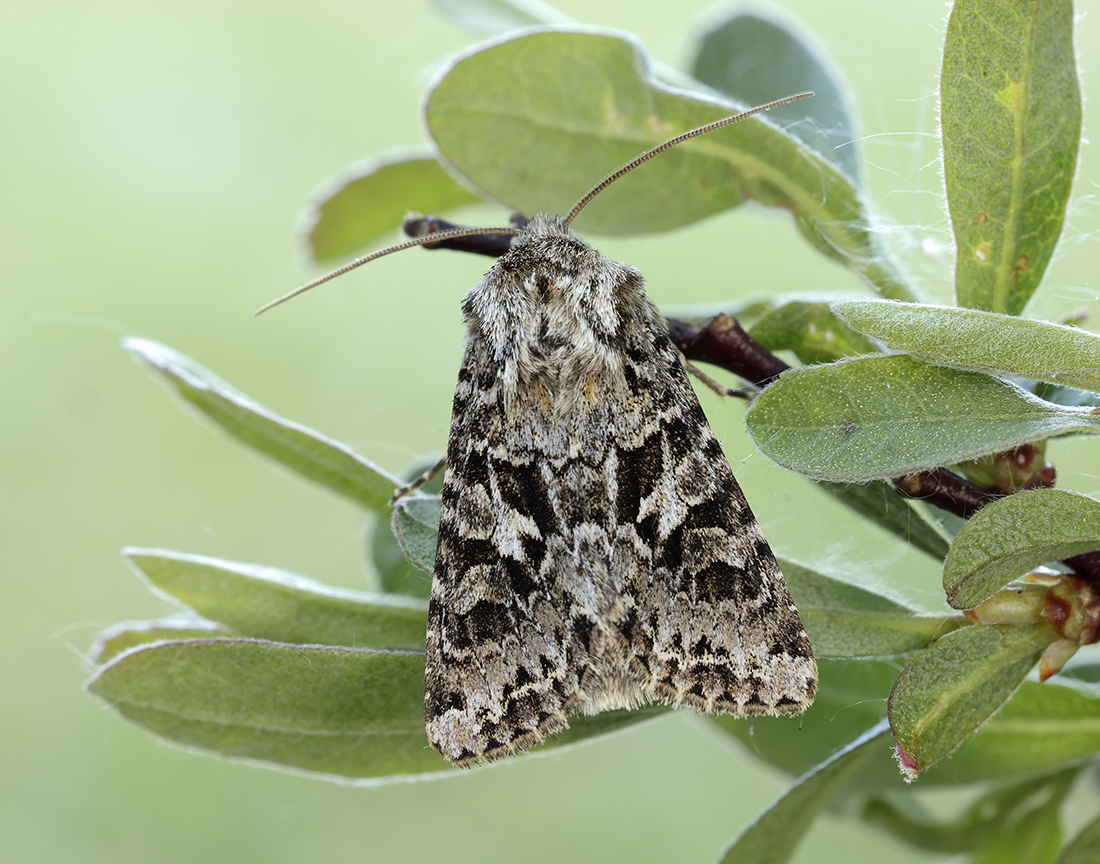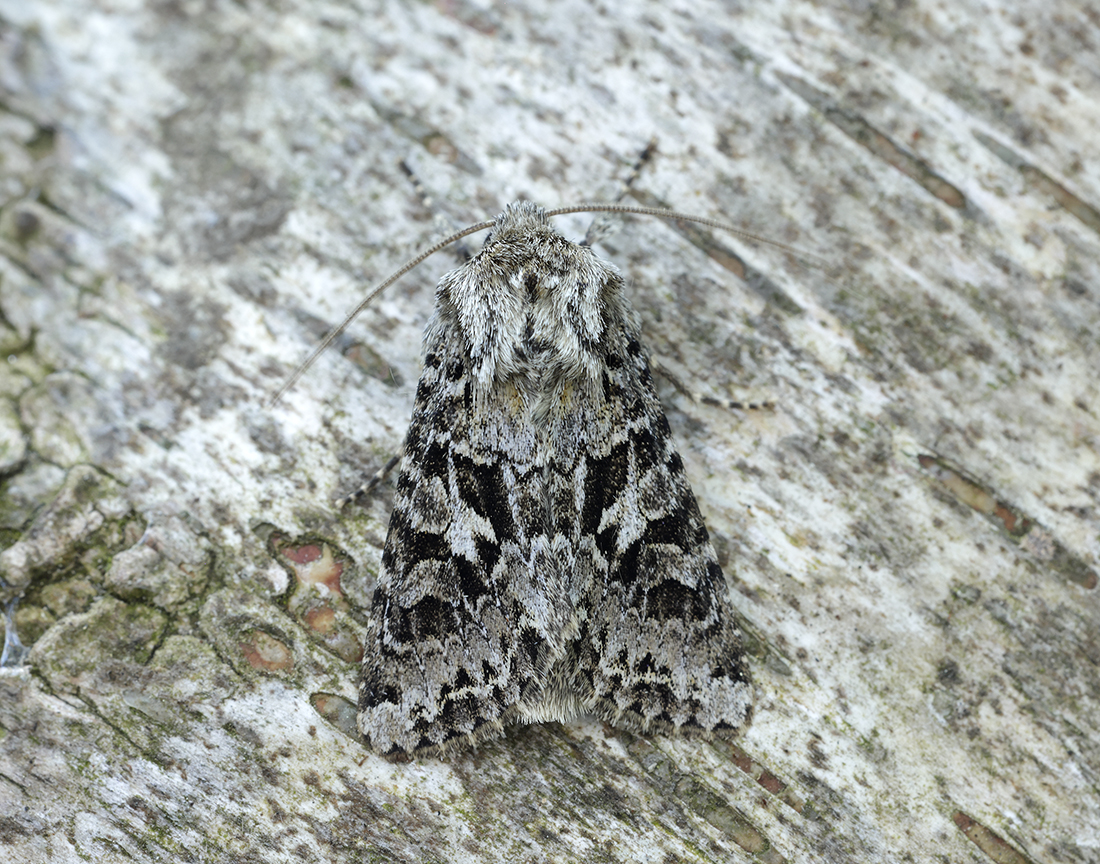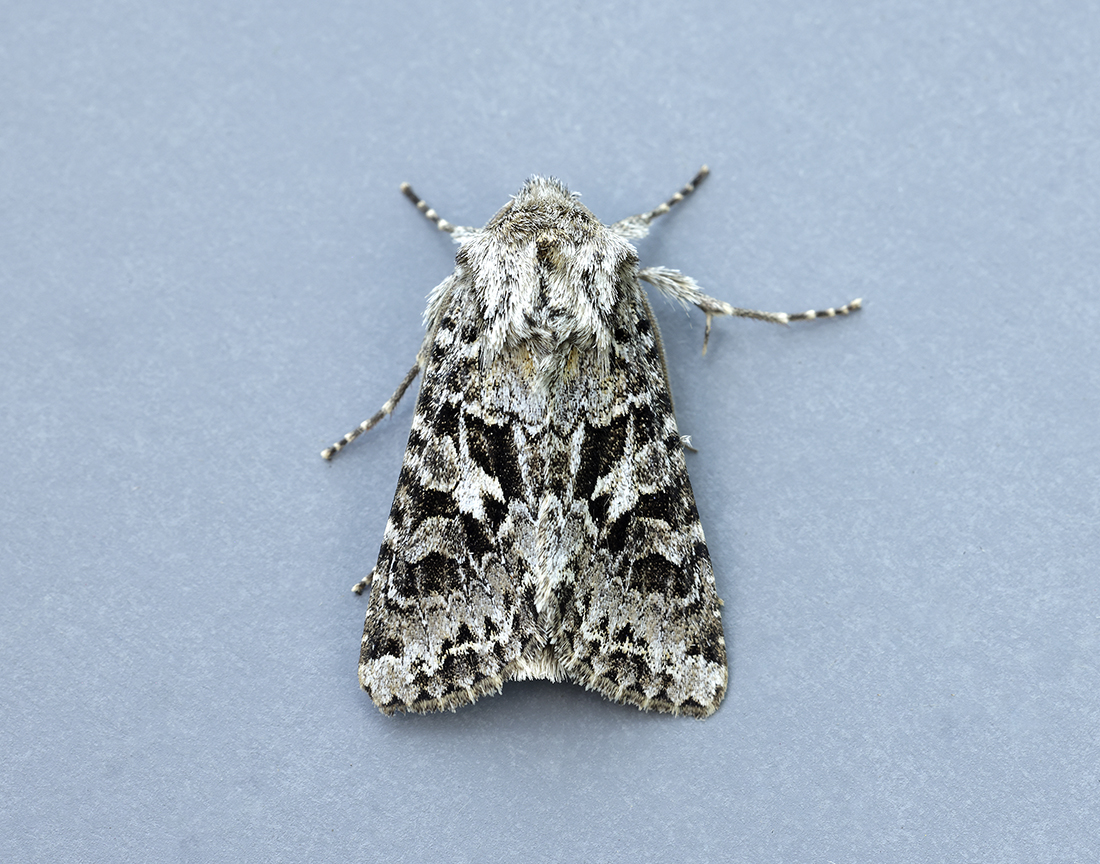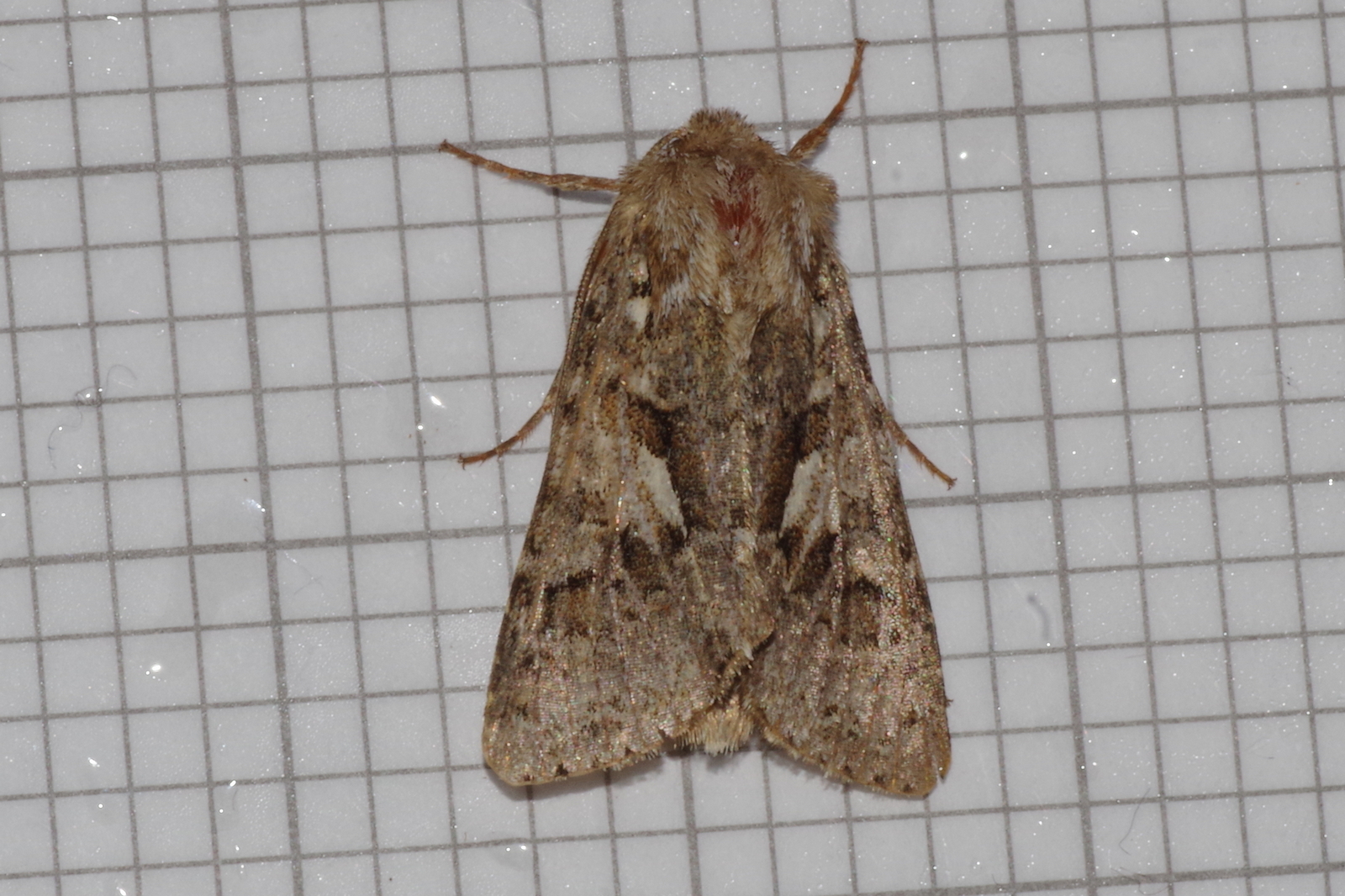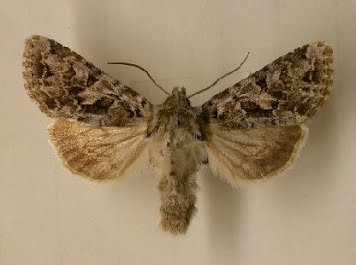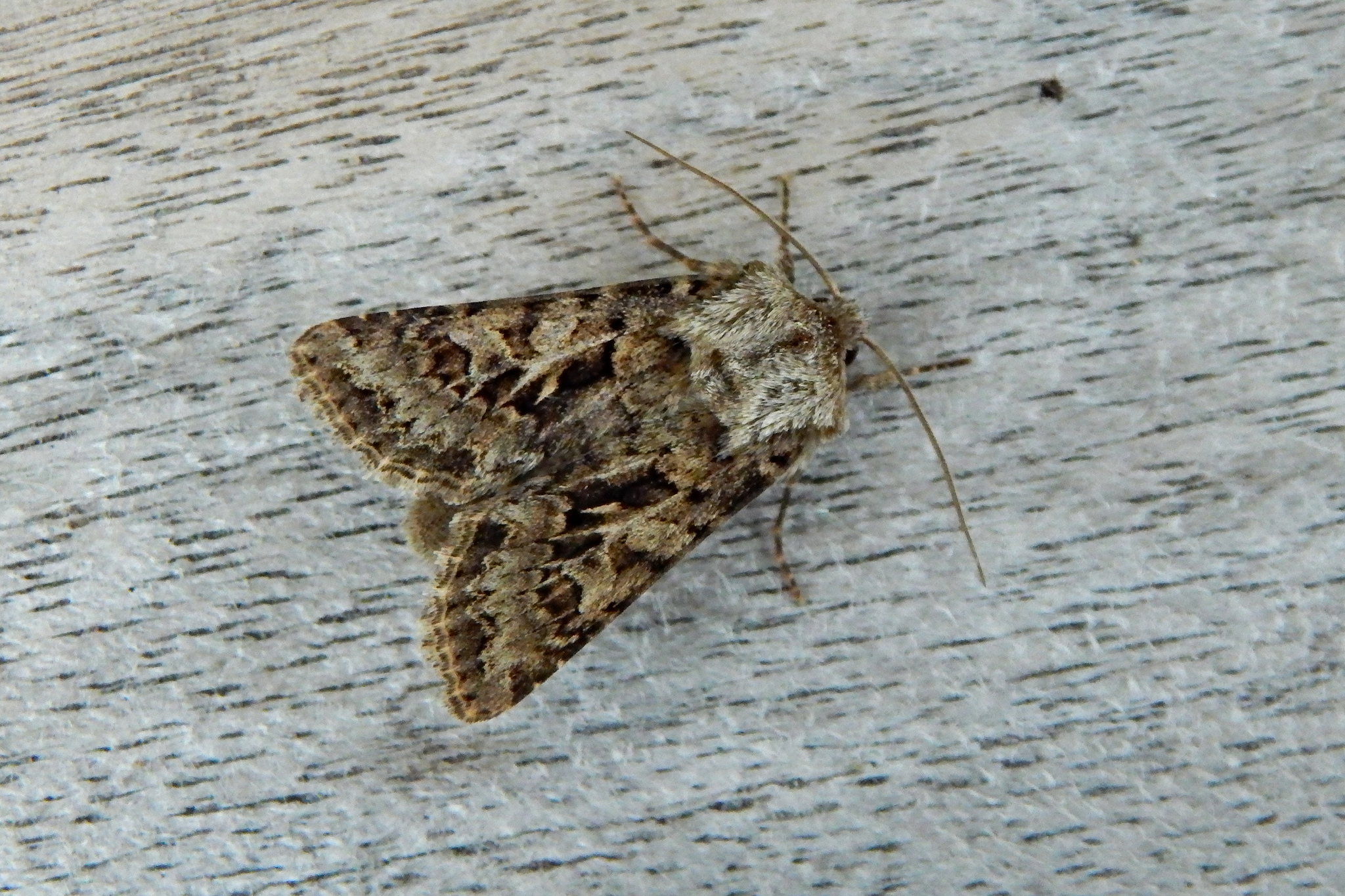Identification
Unmistakable.
Recording Method.
Attracted to light, also comes to sugar and flowers.
Life cycle
Possibly two generations. Overwinters as a pupa in a cocoon close to ground level. Larvae are present July and August, feeding by night.
Larval foodplants
Lucerne, Mouse-ear Hawkweed and Smooth Hawk’s-beard.
Habitat
Open areas like heathland, sand-dunes, downland and also open woodland.
History
Lennon (1863) had stated it was generally common under ‘List of Lepidoptera taken near Dumfries.’ K. J. Morton of Edinburgh (1900) while on a visit in July 1899 to Wigtownshire had found this species in the Monreith area. Gordon (1913) had stated it to be common and generally distributed, finding it at sugar and on rhododendron blossom around the Cosemalzie area. Earliest date was 6th June 1911.
William Evans received a specimen from Mowat, the Killantringan lighthouse keeper that was caught on 15th August 1913, our only record for August, to aid his insect migration studies.
Archibald Russell (1944) listed it as occurring near Gatehouse of Fleet (VC73) during the years 1942-43. Sir Arthur Duncan had found it at Tynron (VC72) during 1951 and again in 1954, specimens in National Museums Scotland.
During 1976-82 there were fourteen records from five of the Rothamsted stations, with Mabie Forest adding a lone record in 1990 and Caerlaverock not recording it at all.
Of the remaining eighty records during the period 1993-2010, Kirkton, Durisdeer, Mersehead RSPB and Carsfad at Dalry feature prominently, with other records from Abbey Burn Foot, Colvend, Fairgirth Hill, Stroan Viaduct, Claymoddie and Twynholm to name a few.

